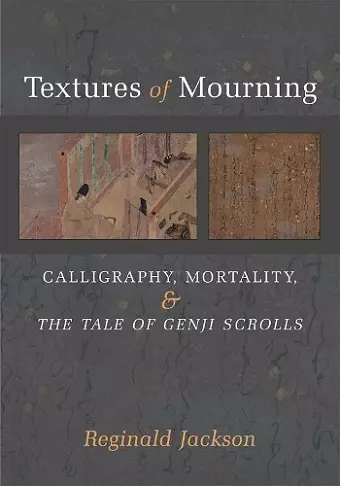Textures of Mourning
Calligraphy, Mortality, and The Tale of Genji Scrolls
Format:Hardback
Publisher:The University of Michigan Press
Published:17th Aug '18
Currently unavailable, our supplier has not provided us a restock date

How does mourning emerge to reshape Japanese visual culture? Textures of Mourning addresses this question by examining engrossing literary and visual portrayals of death and its aftermath from The Tale of Genji and its adaptations. Contending that the work of mourning unfolds through interwoven practices of reading, writing, painting, and public exhibition, Reginald Jackson charts how mourning spurs artistic composition, triggers visceral responses, and seduces spectators in both premodern and contemporary Japan. Textures of Mourning delineates the intimate relationship between mourning and reading at three historical tipping points: the height of imperial power in the early eleventh century, when the literary masterwork The Tale of Genji (1008) was written; the collapse of imperial hegemony in the late-twelfth century, when Genji’s most famous handscroll adaptation was composed (1150); and the post-bubble recessionary context in which those handscrolls were refashioned as the “Resurrected Genji Handscrolls” (2006). As material objects wrought at comparable moments of social upheaval, these texts become vehicles through which to mourn perished ideals of vitality, prosperity, and belonging.
Textures of Mourning is the first full-length manuscript in English to investigate these texts’ complex relationship across eras. By analyzing dozens of sumptuous images, the book pursues mortality’s progression over four sections—“Dying,” “Decomposing,” “Mourning,” and “Resurrecting”—each of which contextualizes factual and fictional accounts of reckoning with death to discern the mechanics of mourning’s labor. A major intervention of the book is to theorize how the riveting opacity, coarse materiality, and skewed temporality of premodern forms trouble modern regimes of looking, feeling, and knowing. Drawing upon scholarship in premodern Japanese literary studies, art history, and performance studies, the book’s innovative trans-disciplinary readings reorient psychoanalytic criticism and performance theory to map the fluctuating topography of calligraphic gestures.
ISBN: 9780472130962
Dimensions: unknown
Weight: unknown
368 pages